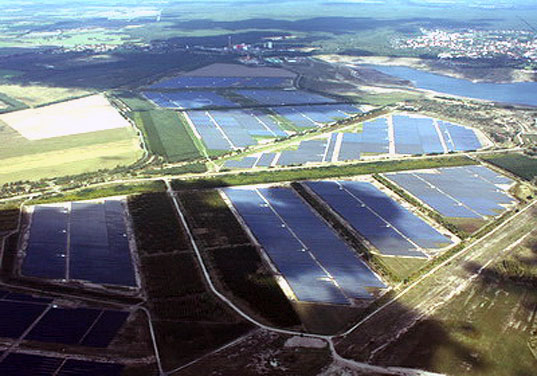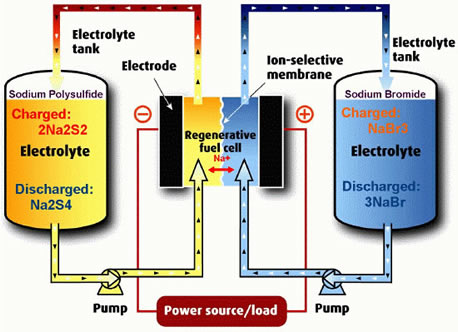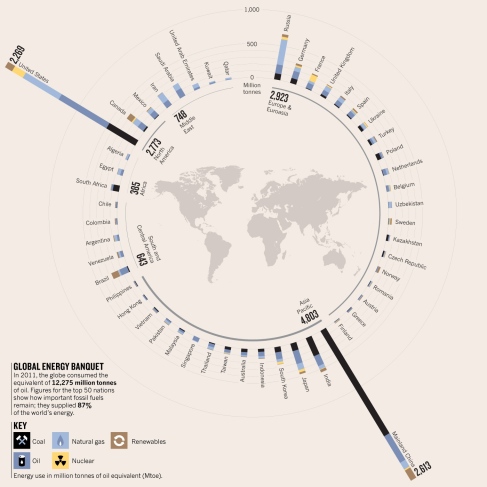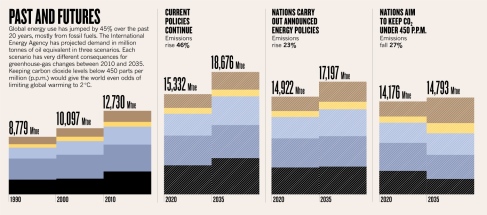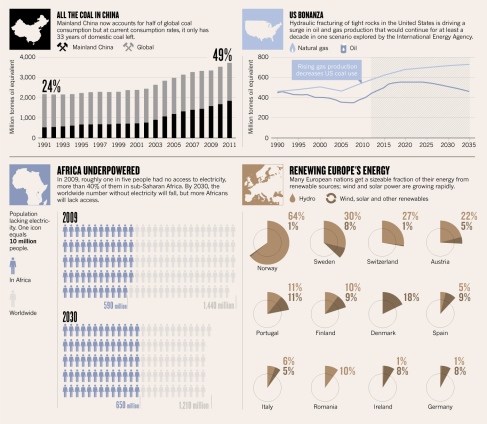A recent article called Turning Pristine Public Lands Into Solar Farms in Bloomberg Businessweek highlighted the Obama administrations’ policy of opening federal lands maintained by the Bureau of Land Management and the Department of the Interior to renewable energy projects. The executive powers that Obama is using are similar to the ones that the Bush administration used to bypass Congress and push for oil and gas drilling on those same lands in 2001. Using Ken Salazar, the Secretary of the Interior, Obama has approved more than 37 renewable energy projects on federal lands that will power more than 3.8 million homes.
 Since taking office, Obama has issued an average of 1,000 fewer drilling leases per year to oil and gas interests. Instead, the administration has green lighted more than 18 other utility-scale solar plant, 7 wind farms, and 9 geothermal facilities.
Since taking office, Obama has issued an average of 1,000 fewer drilling leases per year to oil and gas interests. Instead, the administration has green lighted more than 18 other utility-scale solar plant, 7 wind farms, and 9 geothermal facilities.
However, certain projects have angered environmentalist groups such as the Sierra Club and the NRDC who feel that some of the projects would be better sited on 80,000 – 285,000 abandoned mine sites on federal lands instead of pristine desert space near treasured national parks such as Joshua Tree in southern California. A coalition called the Western Lands Project is suing the Dept. of the Interior in federal court hoping to have the projects moved to those less desirable, degraded lands.
While I am generally skeptical of politicians bypassing Congress to achieve a political goal, I do favor building renewable energy plants on federal lands. I also agree with the Western Lands Project that the Interior should look for better locations for these projects that redevelop sites that have already been ruined by mining operations. Reusing depleted lands and brownfield development would be ideal for PV installation because the land does not have to be cleaned up beforehand and solar PV requires very little maintenance and can be seated on top of the land, not disturbing the contamination. The EPA announced a brownfield redevelopment project called Brightfields that aims to achieve exactly that. As with any major project, land use should be a major factor. This is especially true when using public lands for private development. By identifying sustainable sites that promote redevelopment of tarnished lands, the government can achieve a double victory of renewable energy and brownfield remediation.
The below image shows a refurnished open pit mine in Germany that is now one of the world’s largest PV plants at 166MW. This site would have otherwise been left uninhabitable for any purpose.

